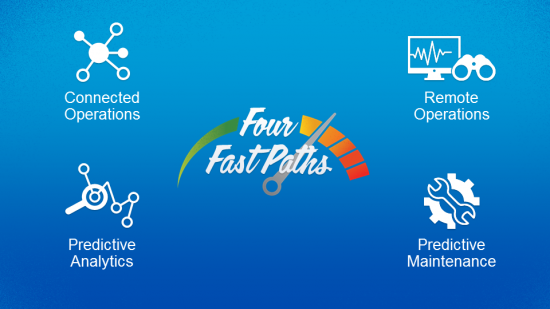































As I said in my last blog, implementing the Internet of Things (IoT) is a journey, not a one-time event. And like every journey, it begins with a single step.
Over the last few years, I have met with dozens of customers across the world and in every industry. Believe it or not, many of them have not heard about IoT, or are confused about how they can implement IoT for business impact. But there are also thousands of customers who have already started on their IoT journey. I have looked at the use cases these customers have picked as their first small projects, and grouped them into four categories. I detail them in my upcoming book, but here is a quick summary.
First, connect devices, sensors, and meters to each other and to a network.
Begin by connecting existing devices to your existing unified IP network and adjust your business process to take advantage of these newly connected things. When all the devices in a plant, oil rig-or any facility-are networked, you suddenly have a window into every part of the operation, enabling you to collect data from sensors that can help you to prevent part failures and optimize operations.
Rockwell Automation provides a great example. By connecting assembly lines and operations in 20 manufacturing plants, and then connecting those plants to each other and its enterprise network, Rockwell was able to:
Second, add remote operations, monitoring, control, and asset management.
Once you've connected your devices on one IP network, adding remote monitoring or asset management capabilities is a logical next step. This is by far the most popular use case. Have you ever faced a situation where your packaging line suddenly stops and you get a safety alert that one of the many doors on the machine is open? You can't restart the line until you send someone to the plant floor to physically check every door. Implementing remote operations delivers a payback the first time it helps you avoid sending a person to see what's going on.
Nimble Wireless, a startup in India, has a client that operates 150 ice cream stores-and is often plagued by power outages that can ruin the inventory of a store in minutes and create a health hazard. Nimble Wireless equipped the freezers in the stores with sensors that notify the manager if the temperature goes up 1 or 2 degrees. The system keeps escalating the notifications all the way up the management line until the problem is fixed. It will even suggest actions to take, such as closing the freezer door or turning on the generator. Within a month of deploying this solution, the company started realizing a payback, and within 13 months, it calculated a return of five times its original investment.
Next, use predictive analytics to identify, understand, and immediately take the best actions.
According to Vernon Turner of IDC, less than 1 percent of data generated today is being analyzed. That's a lot of data going to waste! Predictive analytics can help your staff sort and understand what's coming in, so they can take intelligent actions. It can begin on a basic level-just recognizing patterns and identifying exceptions can help you capture significant value. But the real benefit of putting all these smart assets on the same IP network is to correlate and combine the data coming from multiple sources to gain new insights and to take even more valuable action.

Out-of-service mining equipment can cost operators as much as$2 million per day.
Many industrial operations today run on a 24/7 basis. Downtime can costs plants as much as$20,000 perminute. By using the data coming from your connected machines, combined with industry data and algorithms, predictive analytics can identify trends and probabilities of equipment failure within a certain timeframe-providing the opportunity to optimize the operations and take corrective actions.
Fourth, adopt predictive maintenance to increase uptime.
It must be a corollary of Murphy's Law that things break down at the worst times and in the most inconvenient places. But if you can anticipate these breakdowns, you can minimize the damage.
Rio Tinto, a global mining company, operates extremely expensive equipment in very demanding and remote locations. The cost of just one of its enormous autonomous trucks being out of service is$2 million per day-and that doubles if the breakdown occurs at the bottom of a pit mine and another vehicle has to haul it out. But that cost can be minimized by predictive maintenance. Each truck has some 92 sensors monitoring engines, drivetrains, and wheels. The sensors generate data that is analyzed in near-real time to anticipate when the next failure is likely to occur. So a truck can be rotated out of service for maintenance in an orderly way, instead of disrupting operations through an unplanned breakdown.
rotated out of service for maintenance in an orderly way, instead of disrupting operations through an unplanned breakdown.
These are just a few examples. Your peers are implementing fast-payback IoT solutions across many industries-from agriculture to healthcare to sports and entertainment. In fact, I can't think of any market where IoT is not being adopted today.
So how about you? If you haven't yet started on the IoT journey, just pick one of the four fast path scenarios mentioned above to minimize the risk and maximize the value of your first project. Which of these is the best fit foryourbusiness?
 Горячие метки:
3. Инновации
Internet of Things (IoT)
Maciej Kranz
connected factory
predictive maintenance
predictive analytics
remote operations
Горячие метки:
3. Инновации
Internet of Things (IoT)
Maciej Kranz
connected factory
predictive maintenance
predictive analytics
remote operations